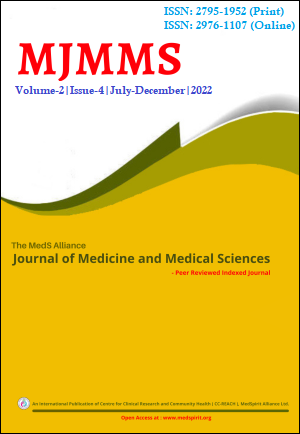Distribution of ABO and Rhesus Blood Groups among the Blood Donors in a Teaching Hospital of Hilly Region, Nepal: A Cross-sectional Study
DOI:
https://doi.org/10.3126/mjmms.v2i4.53679Keywords:
ABO Blood Group, Blood Bank, Rhesus Blood Group SystemAbstract
INTRODUCTION: The ABO and Rhesus-D blood group systems are important and widely used in humans for transfusion of blood and blood components for various medical conditions. The purpose of this study was to determine the distribution of ABO and Rhesus D blood groups among blood donors at Karnali Academy of Health Sciences, Teaching Hospital, Jumla, Nepal. MATERIALS AND METHODS: From July 2019 to January 2022, a retrospective cross-sectional study among 800 blood donors was conducted using medical records from blood donors who donated blood in a Teaching Hospital of Jumla, Nepal. Microsoft Excel was used to analyze the
data, and the results were presented as frequency and percentage. RESULTS: The most common blood group was ‘A’ (30.6%) and the least common was ‘AB’ (14.5%) with a majority of male blood donors (84.6%). Only 2.2% of blood donors was Rhesus-negative, while 97.7% were Rhesus-positive. Considering ABO and Rhesus blood groups altogether, blood group ‘A’ Rhesuspositive (30.1%) was the most common and blood group ‘AB’ Rhesus-negative (0.1%) was the least common. CONCLUSIONS: Blood group ‘A’ was the most common, followed by blood groups ‘B’, ‘O’, and ‘AB’. The majority of the blood donors were Rhesus-positive, with blood group ‘AB’ Rhesus-negative being the most uncommon. This information would be helpful to the hospital’s blood bank in this rural hilly region, particularly in the hospital’s planning for blood transfusion services.
Downloads
Downloads
Published
How to Cite
Issue
Section
License

This work is licensed under a Creative Commons Attribution-NonCommercial 4.0 International License.




